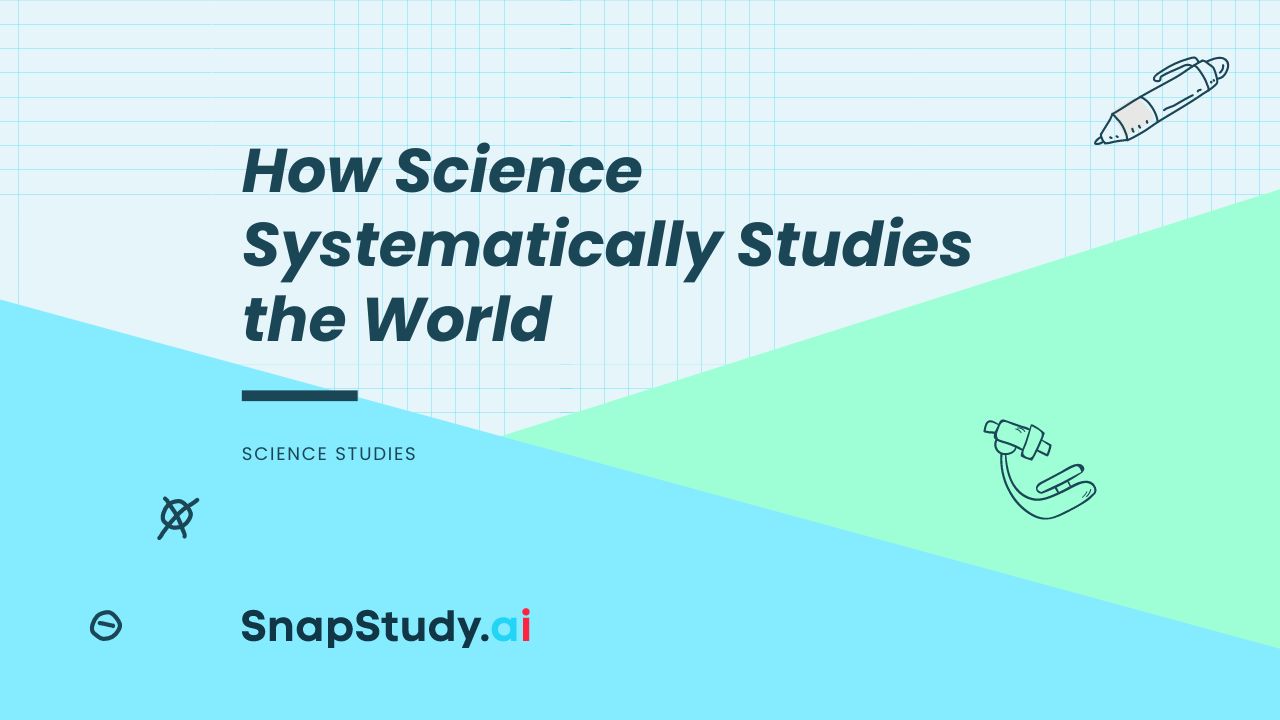Science is a systematic and logical approach to discovering how things in the universe work. It is more than a collection of factual knowledge. Instead, it’s a way of thinking, a process of skeptically interrogating the universe with a fine understanding of human fallibility. It is a self-correcting way of knowing, a path towards an ever more refined understanding of the world we live in. Now, let’s delve deeper into how science systematically studies the world.
The Scientific Method
At the heart of scientific study lies the scientific method, a rigorous, disciplined process for exploring the natural world and uncovering its secrets. This is a set of steps used to test hypotheses, which are potential answers to questions about the natural world. Let’s explore each of these steps in detail:
- Observation: The first step in the scientific method is observation. Scientists use their senses and tools to observe a phenomenon in the natural world. This could be anything from the behavior of a particular animal species to the movement of celestial bodies. Observations are the raw data from which scientists begin to build their understanding.
- Question: After making an observation, scientists ask a question about what they have observed. These questions are often framed to identify the cause or purpose of the observed phenomenon. For example, why does a particular animal behave in a certain way? Or, what causes a star to move in a specific pattern?
- Hypothesis: A hypothesis is a proposed answer to the question, a tentative explanation for the observed phenomenon. It is a prediction that can be tested through experiments. It is important to note that a hypothesis must be falsifiable – that is, it must be possible to prove it wrong.
- Experiment: Scientists design and conduct an experiment to test the hypothesis. The experiment must be carefully planned to ensure that the results are reliable. This often involves setting up a control group and a test group, and only changing one variable at a time.
- Analysis: After conducting the experiment, scientists analyze the data they have gathered. This involves techniques such as statistical analysis to determine if the results are significant.
- Conclusion: Finally, scientists draw a conclusion from their analysis. If the data supports the hypothesis, it is accepted. If not, the hypothesis may be rejected or modified and the process begins again.
Observation and Measurement
Scientific observation and measurement are crucial parts of the process. Observations are typically made using our senses or with tools and instruments. These might include microscopes for observing cells, telescopes for observing celestial bodies, or thermometers for measuring temperature. Measurement provides a way to describe observations with numerical data, which can be analyzed statistically. It allows scientists to quantify their observations, lending precision and objectivity to the process.
Experimentation
Experimentation is the stage of scientific research where scientists test the hypotheses. The experiments are designed in such a way that they can be repeated by other scientists to verify the results. This repeatability is a defining characteristic of scientific experiments. It ensures that the results are reliable and not due to chance or bias. The experiments also need to be controlled, meaning that all variables except the one being tested are kept constant.
Data Analysis
The data collected from the experiment is then analyzed. This analysis includes looking for patterns, making calculations, and performing statistical tests. The objective of data analysis is to find out if the results support the hypothesis or not. If the data supports the hypothesis, it is considered evidence for the validity of the hypothesis. If it does not, the hypothesis may be rejected or revised.
Peer Review and Publication
Once the research is complete, the results are often published in a scientific journal. Before publication, the research undergoes a process of peer review, where other experts in the field review the work for accuracy and validity. This process is a cornerstone of modern scientific research. It ensures that the research is sound, the methods were appropriate, and the conclusions are supported by the data.
Conclusion
Science systematically studies the world using a methodical approach known as the scientific method. This includes making observations, asking questions, forming hypotheses, conducting experiments, analyzing data, and drawing conclusions. Through this process, science improves our understanding of the universe and our place in it. It allows us to build on the work of others, constantly refining and expanding our knowledge. It is a never-ending quest for truth, driven by curiosity and the desire to understand.





